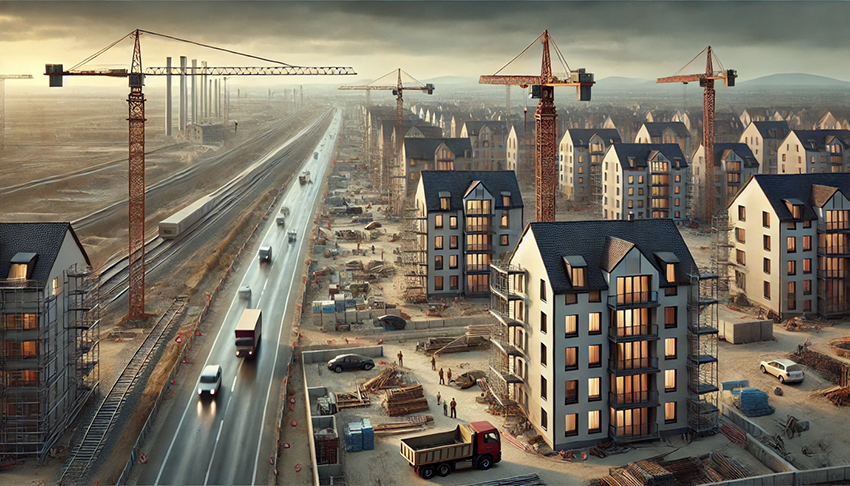German construction industry faces prolonged crisis amid rising insolvencies and declining permits
The German construction industry continues to face significant challenges, with declining sales, rising insolvencies, bureaucratic hurdles, and lengthy planning procedures impeding progress. Digitalization remains insufficient, building permits are in decline, and completions are falling short of expectations. According to Michael Prüfer, Manager of Risk Services at Atradius, these difficulties are expected to persist for years.
Industry data underscores the severity of the situation. Between January and October 2024, insolvencies in the construction sector rose by 17.5% compared to the same period the previous year. Atradius estimates that by the end of 2024, this figure will reach 22%. Non-payment reports within the industry saw an 8.1% decline by the end of February 2025, though this is partly due to the already high levels reported in 2024. The building materials sector, however, experienced a 20% increase in payment defaults. Building permits in 2024 dropped by 24.2% from the previous year, while overall revenue in the mainstream construction sector fell by about 3%. The federal government’s target of constructing 400,000 new homes annually has not been met. The German Construction Confederation estimates that only 250,000 to 255,000 housing units were completed in 2024, down from 294,400 in 2023. The outlook for 2025 is even bleaker, with completions potentially falling below 200,000 units. Prüfer highlights that the issue in residential construction is not recognition but implementation.
Credit risk in the sector has increased significantly, particularly for small construction firms, which make up 80 to 85% of the industry and employ fewer than 20 workers. Many of these companies have responded by extending their payment terms due to liquidity constraints. However, a widespread market shakeout is unlikely, as larger firms have strengthened their financial positions compared to previous years.
The lack of government action in residential construction remains a pressing issue. Atradius points out that political leaders have failed to follow through on their commitments. The next federal government must create conditions that stabilize the sector by accelerating the issuance of building permits, revising regulatory requirements, reducing bureaucracy, and clarifying funding programs. Despite these difficulties, the German construction industry, which employs 2.6 million people, remains structurally solid. Some sectors, particularly civil engineering, continue to perform well, benefiting from projects such as Deutsche Bahn’s new rail lines and infrastructure investments related to the energy transition. In 2024, public-sector construction investment increased by 3%, but growth is expected to stagnate this year due to strained municipal budgets.
The impact of a proposed infrastructure investment package remains uncertain. If the €500 billion funding plan for roads, railways, and other infrastructure projects is approved by lawmakers, it could provide a significant boost to the industry. Such a financial commitment would create long-term planning security and stable funding over a decade, according to Prüfer.
A recovery in the sector is not expected before the second half of 2025. Atradius projects minimal growth of 0.1% for the year, accompanied by a 1.9% decline in profits. Residential construction is expected to stagnate, while non-residential construction could see modest growth of 0.3%, and civil engineering may expand by 0.8%, driven by government infrastructure investments.
A looming skilled labor shortage adds to the industry’s concerns. While construction companies have largely maintained workforce stability in recent years, demographic trends pose a long-term challenge. Around a third of construction workers are over 50, and given the physically demanding nature of the work, many are unlikely to remain in the sector until retirement age. Prüfer warns that the labor shortage will become more acute as baby boomers retire. Despite efforts to raise wages and improve working conditions, further measures will be necessary to make construction careers more attractive in the years ahead.
Source: Atradius









